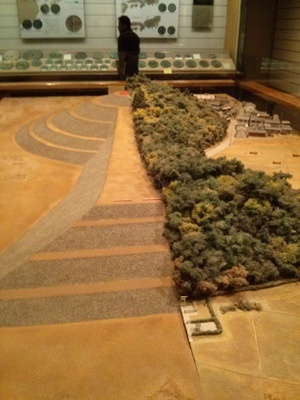Kofun Period
From SamuraiWiki
Revision as of 13:55, 25 September 2013 by LordAmeth (talk | contribs) (Created page with "right|thumb|400px|A model of [[Hashihaka kofun, one of the earliest examples of the keyhole-shaped tomb mound, showing both the tree-covered appea...")

A model of Hashihaka kofun, one of the earliest examples of the keyhole-shaped tomb mound, showing both the tree-covered appearance, and the underlying manmade structure. National Museum of Japanese History.
- Japanese: 古墳時代 (kofun jidai)
The Kofun period extends from roughly 250 CE to roughly 550 CE, and is marked by the prevalence of large tomb-mounds or tumuli, called kofun in Japanese, in which royalty and other elites were buried. The Kofun period and the Asuka period (538-710) which follow it together comprise the Yamato period, the period of time in which a centralized polity, the Yamato state, first formed, developed, strengthened, and grew into the proto-Japanese state.
The largest kofun are found in the Kinai region (in and around Nara, Kyoto, and Osaka), but roughly 150,000 tomb-mounds of various sizes are strewn throughout most of the main three islands of the archipelago (excluding Hokkaidô and the Ryûkyû Islands)
| Previous Period Yayoi Period |
Kofun Period | Following Period Asuka Period |
References
- Conrad Schirokauer, David Lurie, and Suzanne Gay, A Brief History of Japanese Civilization, Wadsworth Cengage (2013), 11-15.